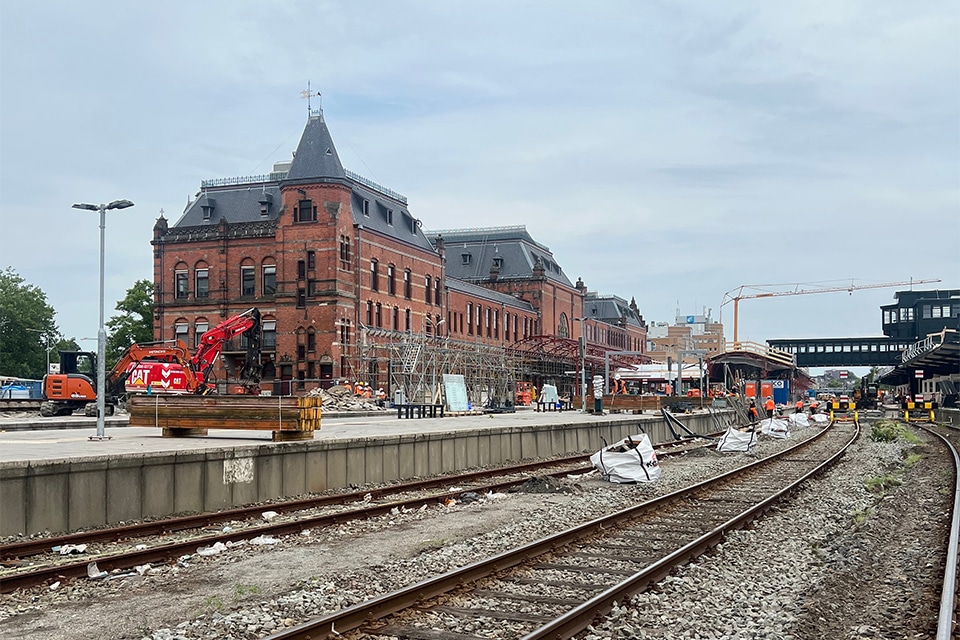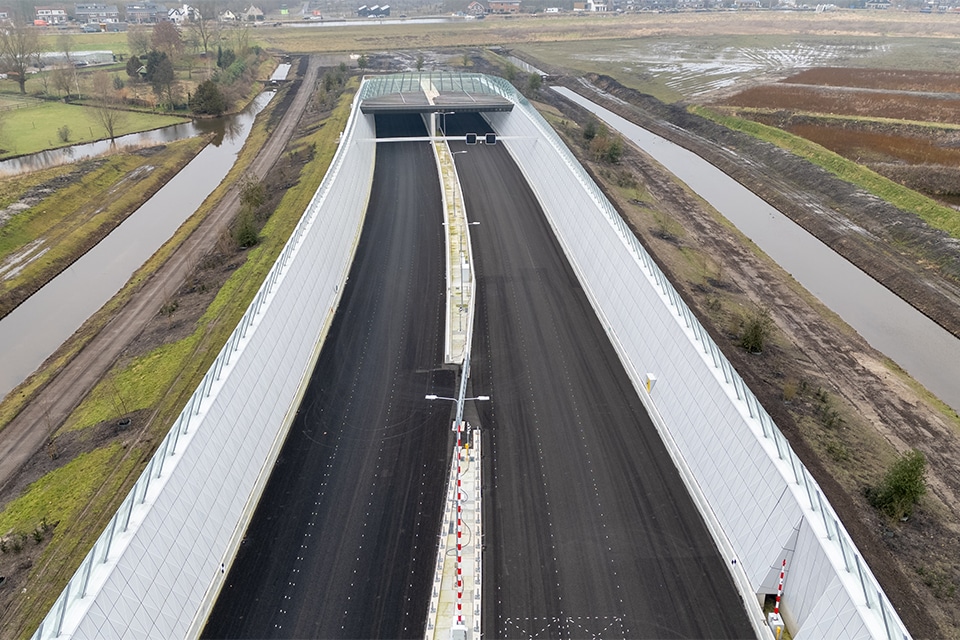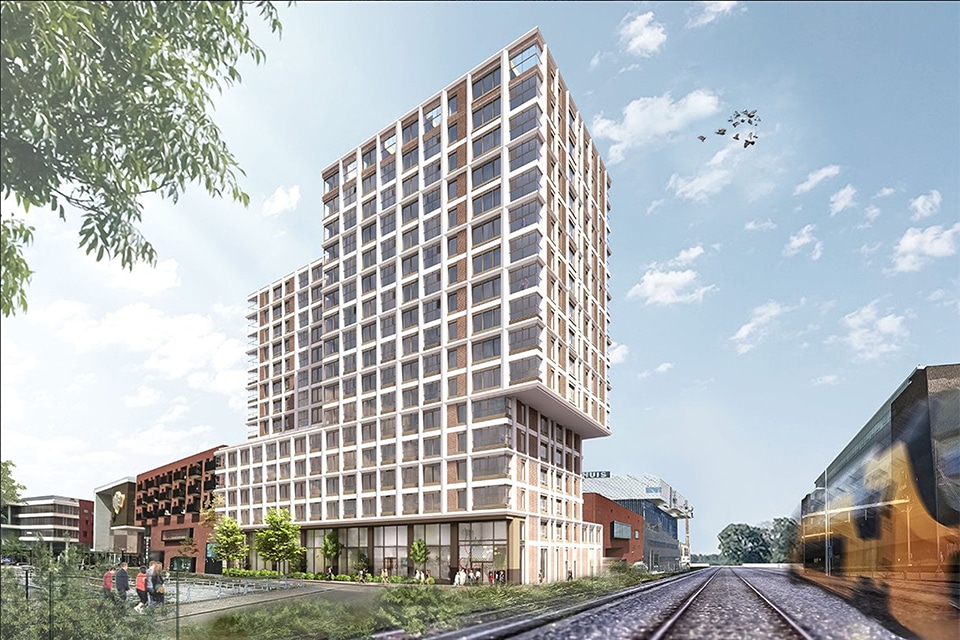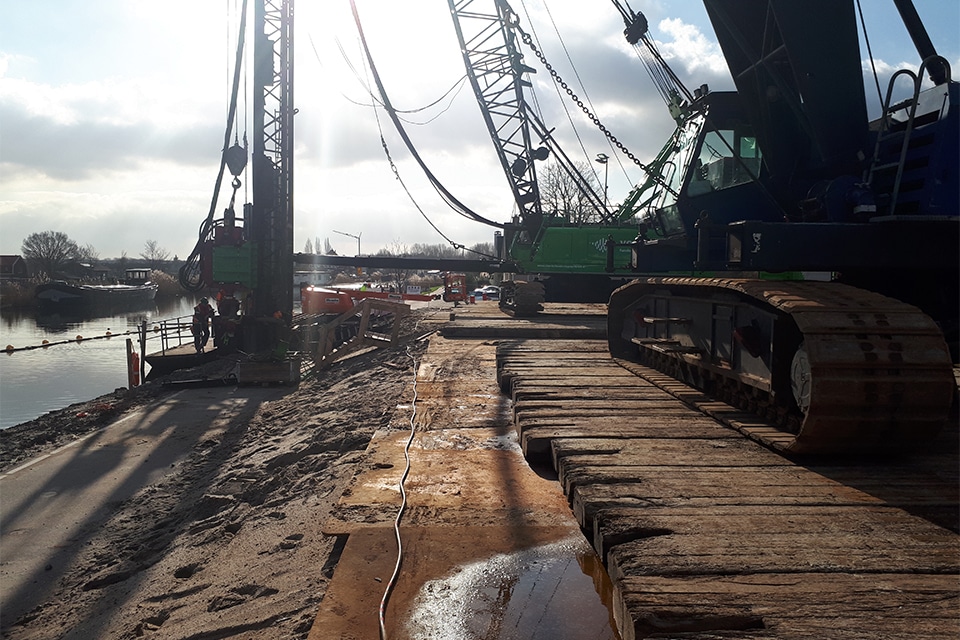
Pivot in civil railroad construction
Five years ago one of the most far-reaching rail projects in the Netherlands began in Groningen: the renovation and expansion of Groningen Main Station into a high-quality public transport hub and the realization of a new yard. Without a solid subway, water drainage, sewerage and infrastructure, none of the tracks would have been in place. Molhoek Infratechniek was the linchpin in the civil railroad construction, both in the renewal and expansion of the Hoofdstation and in the construction of the new De Vork yard.

To make room for the expansion of the Main Station, the existing yard was initially relocated to a large site just outside the city. “Commissioned by Strukton Rail Nederland, we laid the complete civil engineering foundation for the new yard,” says Jan Postema, project manager at Molhoek Infratechniek. “This yard, 1.5 kilometers long and 400 meters wide with ten tracks side by side, has been the beating heart for cleaning, shunting and parking NS and Arriva trains ever since. To this end, we have, among other things, made the sub-base for the tracks, constructed the sewerage and drainage systems for drainage, laid many kilometers of clinker pavement between the tracks and realized many crosswalks to guide people and equipment over the tracks.” Molhoek Infratechniek also provided the legal separation around the site.
Broad expertise
After the railway yard was relocated, space was created for the construction of the new station area. Here, too, Molhoek Infratechniek's broad expertise once again came into its own. “It is precisely where the railroad world touches the civil environment that we are at our best,” says Patrick Kummu, project manager at Molhoek Infratechniek. “Among other things, we built the temporary platforms, including the temporary routes for passengers to ensure safe access to the trains. Then Strukton Infra Specials could get to work on the construction of the new Main Station, while the existing station remained in operation. We regularly assisted during that period with the necessary hand and hand services.” It turned out to be a lull before the storm, because from 2025 the specialist came full circle again to make all the preparations for the 64-day.
64-day out-of-service period
Whereas a regular out-of-service period often lasts 52 hours or a maximum of one or two weeks, here work was carried out 24/7 for 64 days. Molhoek Infratechniek was the only party continuously present, often with several shifts simultaneously. “A progress meeting took place every day, in which all disciplines looked ahead together: what is going well, where is the threat of disruption and how can we adjust?” says Postema. This close coordination proved crucial, as structural engineers, track builders, installers and security specialists were literally working on the same postage stamp. And the urban environment added complexity to the project. “Working with cranes, dumpers and freight traffic in the middle of Groningen inevitably caused noise pollution. Sometimes working methods had to be adjusted or driving plates laid to limit nuisance,” Kummu looks back. “Unexpected factors such as soil contamination and archaeological discoveries also required flexibility.”
Nevertheless, all those involved managed to put the new Main Station into operation on schedule after the 64-day period. “It is unique what we have achieved together with both Strukton parties, partly because the railroad and civil disciplines worked seamlessly together. An achievement everyone can be proud of,” Postema concluded.



